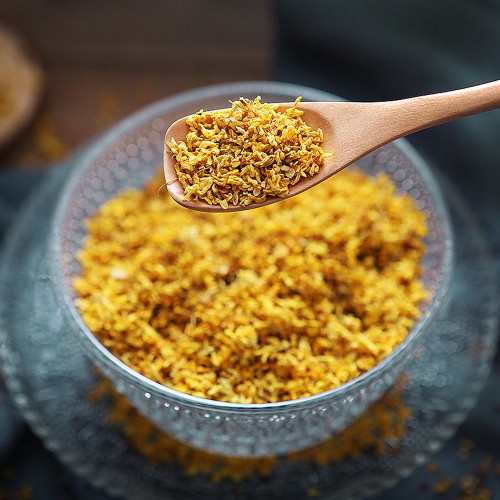Product Overview
Osmanthus is an evergreen shrub with attractive foliage and clusters of small, very fragrant flowers. These flowers are also used in some of the world's most famous and expensive fragrances. Osmanthus Tea is a Chinese specialty, popular with its gentle aroma and delicious taste. At the same time, sweet-scented osmanthus tea is also a rare herbal medicine well known for its balminess.
According to recent research, Osmanthus Tea contains health enhancing microelements like Selenium, Cobalt, Manganese, and Molybdenum. The Osmanthus tea cultivates the spirit and harmonizes the mind; expels lassitude and relieves fatigue; stimulates thoughts and prevents drowsiness.
It is especially good for beauty. Osmanthus Tea flavor brings you a sea of fragrant flowers. The sweet delicate flowers have a fruity taste reminiscent of sweet summer apricots.
Osmanthus fragrans is a flower native to China that is valued for its delicate fruity-floral apricot aroma. It is especially valued as an additive for tea and other beverages in the far east. While the flowers of osmanthus range from silver-white to gold-orange to reddish. Osmanthus absolute is very expensive and accordingly is used in only the most expensive perfumes and flavors.
Various workers have examined the different colored varieties and find that the gold-orange variety tends to have more of the desirous notes and tend to be higher in carotenoid derived materials. Among the carotenoids of Osmanthus are all trans-beta-Carotene, all trans-alpha-Carotene and Neo-beta-carotene B.
To prepare the tea, rinse tea cup and teapot with hot water. Use about 2 teaspoons for every 500ml of water. Infuse in hot water at 90°c (194°F) to 95°c (203°F) for 2 to 4 minutes for the first and second brewing. Gradually increase steeping time and temperature for subsequent brewing.













